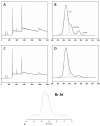Theoretical and Experimental Optimization of the Graft Density of Functionalized Anti-Biofouling Surfaces by Cationic Brushes
- PMID: 33348625
- PMCID: PMC7766574
- DOI: 10.3390/membranes10120431
Theoretical and Experimental Optimization of the Graft Density of Functionalized Anti-Biofouling Surfaces by Cationic Brushes
Abstract
Diseases and complications related to catheter materials are severe problems in biomedical material applications, increasing the infection risk and medical expenses. Therefore, there is an enormous demand for catheter materials with antibacterial and antifouling properties. Considering this, in this work, we developed an approach of constructing antibacterial surfaces on polyurethane (PU) via surface-initiated atom transfer radical polymerization (SI-ATRP). A variety of cationic polymers were grafted on PU. The biocompatibility and antifouling properties of all resulting materials were evaluated and compared. We also used a theoretical algorithm to investigate the anticoagulant mechanism of our PU-based grafts. The hemocompatibility and anti-biofouling performance improved at a 86-112 μg/cm2 grafting density. The theoretical simulation demonstrated that the in vivo anti-fouling performance and optimal biocompatibility of our PU-based materials could be achieved at a 20% grafting degree. We also discuss the mechanism responsible for the hemocompatibility of the cationic brushes fabricated in this work. The results reported in this paper provide insights and novel ideas on material design for applications related to medical catheters.
Keywords: anti-biofouling; catheter; cationic brushes; graft density; hemocompatibility; polyurethane.
Conflict of interest statement
The authors declare no conflict of interest.
Figures









References
-
- Rickard C.M., Nicole M., Joan W., Runnegar N., Larsen E., McGrail M.R., Fullerton F., Bettington E., Whitty J.A., Choudhury M.A., et al. Dressings and securements for the prevention of peripheral intravenous catheter failure in adults (SAVE): A pragmatic, randomised controlled, superiority trial. Lancet. 2018;392:419–430. doi: 10.1016/S0140-6736(18)31380-1. - DOI - PubMed
-
- Laura L. Antibiotic locks for the treatment of catheter-related blood stream infection: Still more hope than data. Semin. Dial. 2019;32:402–405. - PubMed
LinkOut - more resources
Full Text Sources

